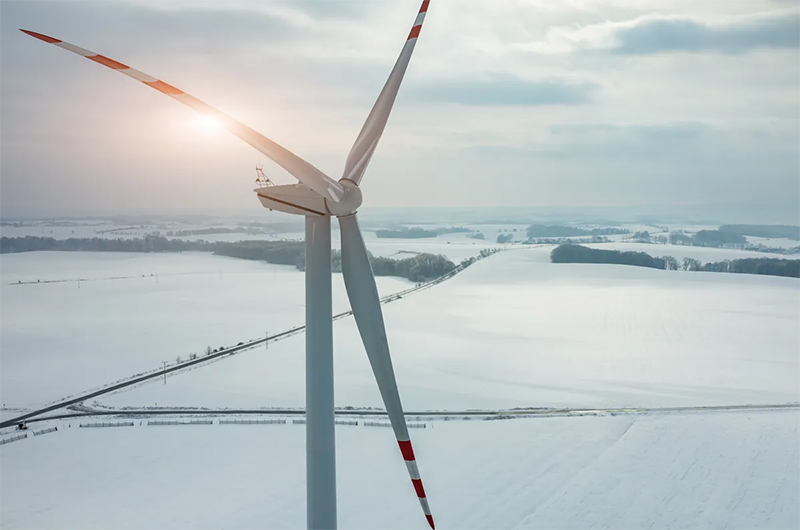|

January 19, 2024
By Holly Large
Do Wind Turbines Stop Working In
Freezing Temperatures?

Wouldn’t blame them if they did though, it is a
bit chilly outside.Image credit: Stockr/Shutterstock.com
It’s currently winter in the Northern Hemisphere,
and if you’ve seen the news in the last couple of weeks, you’ll know
that many countries have been plunged into freezing temperatures. As
if convincing your dog to pee outside and avoiding slipping on ice
wasn’t enough, some have claimed that the chilly weather can endanger
our electricity supply – namely, in the form of wind turbine failure.
But as long as they’re weatherproofed, that isn’t the case.
“The primary issue with the wind turbines in
Texas is that such extreme cold weather was not expected based on the
historical record of weather, and therefore the developers did not
weatherize the wind turbines,” Michael Howland, MIT professor of civil
and environmental engineering, told MIT’s Climate Portal. “Wind
turbines operate in much colder locations than Texas, and dealing with
icing is very straightforward and common through weatherization.”
According to international design standards, wind turbines should be
able to operate down to temperatures as low as -20°C (-4°F). However,
wind farms operate successfully in places where it can get much
chillier than that, like the North Sea, Finland, and Sweden, the
latter of which recently experienced a less-than-balmy -41.6°C
(-42.8°F).
In countries such as these, wind turbines are designed with what’s
known as “cold-weather packages”. These can include heaters for
lubricants and the turbine’s bearings, and several different systems
covering ice detection, de-icing, anti-icing, and hardened sensors.
Swedish power company Skellefteå Kraft has created one such package
that’s designed to stop ice from even getting a chance to mingle with
the blades. “It involves covering the wind turbine’s blades with a
thin layer of carbon fibre which is heated when necessary to prevent
ice from forming,” the company website explains. “Ice sensors then
detect when there is a risk of ice formation and start the de-icing
system before ice can be formed.”
Thanks to these features, turbines can keep on spinning in
temperatures that would certainly put the rest of us off work. The
events in Texas suggest that, with the recent uptick in super cold
winters, specialized weather packages might end up being a more
widespread necessity.
“Since extreme weather is increasingly
affected by
climate change, we may need to revisit which locations require
wind turbine weatherization,” said Howland.
All “explainer” articles are confirmed by fact
checkers to be correct at time of publishing. Text,
images, and links may be edited, removed, or added to at a later date
to keep information current.
Green Play Ammonia™, Yielder® NFuel Energy.
Spokane, Washington. 99212
509 995 1879
Cell, Pacific Time Zone.
General office:
509-254
6854
4501 East Trent
Ave.
Spokane, WA 99212
|